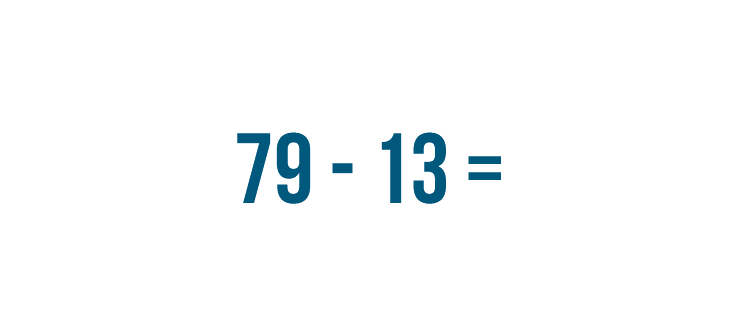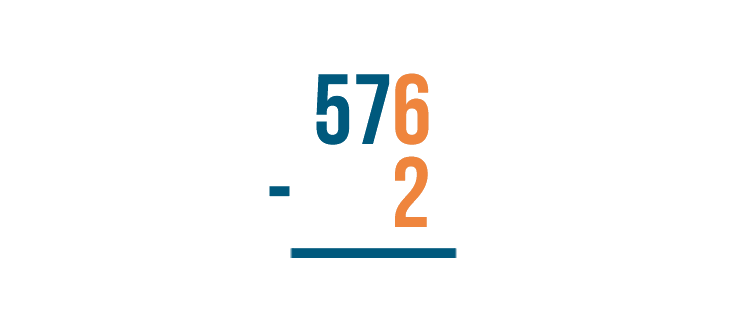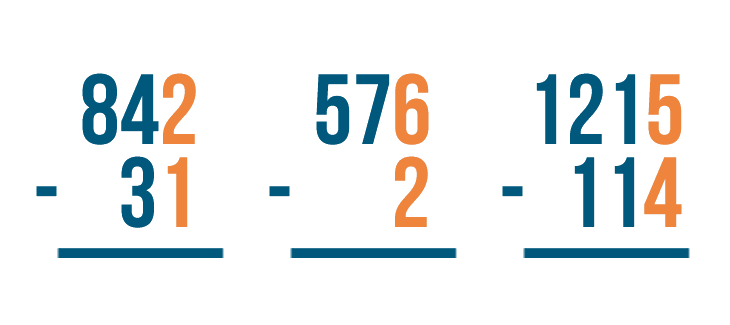Addition and Subtraction
Subtracting Two- and Three-Digit Numbers
Subtracting Larger Numbers
In Lesson 3, we learned that counting and using visuals can be useful for solving basic subtraction problems. For instance, say you have 9 apples and you use 6 to make a pie. To find out how many apples are left, you could represent the situation like this:

It's easy to count and see that 3 apples are left.
What if you need to solve a subtraction problem that starts with a large number? For instance, let's say instead of making an apple pie, you want to pick apples from an apple tree. The tree has 30 apples and you pick 21. We could write this as 30 - 21.

You might see why counting to solve this problem isn't a good idea. When you have a subtraction problem that starts with a large number, it could take a long time to set up the problem. Imagine the time it would take to count out 30 objects and then take away 21! Also, it would be easy to lose track as you counted. You could end up with the wrong answer.
For this reason, when people solve a subtraction problem with large numbers, they set up the problem in a way that makes it easy to solve one step at a time. Let's see how this works with another problem: 79 - 13.
We can see that 79 - 13 and ![]() mean the same thing — they're just written differently.
mean the same thing — they're just written differently.
Now you try stacking! Write these situations as stacked subtraction expressions. Don't solve them yet — simply set them up.
You have 272 books and you donate 60 to a library.
57 passengers are riding a bus. 24 get off at the first stop.
A clothing store has 19 scarves and sells 10.
















